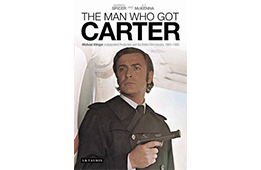The Man Who Got Carter
Co-authored by Professor Andrew Spicer and Dr Anthony McKenna, this is the first study to focus on the most successful British independent producer of the 1970s, though his career stretched from the early 1960s to the early 1980s. The research for this publication was funded by a two-year AHRC grant and is based on the Michael Klinger papers that are housed at UWE. Please see the project website: http://michaelklingerpapers.uwe.ac.uk.
The study discusses Klinger’s origins in 1960s Soho and the rise of ‘sexploitation’ cinema and analyses his partnership with Tony Tenser and their production/distribution/exhibition company, Compton-Tekli. Klinger shifted from sensational material (e.g. ‘The Yellow Teddy Bears’) to more artistic productions through his association with Roman Polanski with whom he made ‘Repulsion’ and ‘Cul-de-Sac’. Klinger went on to work with Mike Hodges, creating two seminal crime thrillers: ‘Get Carter’ and ‘Pulp’. Klinger’s range of films was wide: stretching from bleak, introspective melodramas (‘Somewhere to Hide’), sex comedies (the ‘Confessions’ series with ‘Randy’ Robin Askwith), further crime thrillers, to blockbuster action-adventure films: ‘Gold’ and ‘Shout at the Devil’. The study considers his successes and failures, and evaluates his career, his deft combination of commercial showmanship and nurturing young creative talent: Polanski and Hodges, but also directors Peter Collinson, Alastair Reid and Moshe Mizrahi and the actor Linda Hayden. It argues that the producer is often the key person in the creation of a feature film and that film studies must engage with the whole trajectory of a film – from conception to exhibition – rather than focus on the interpretation of the finished ‘text’.


